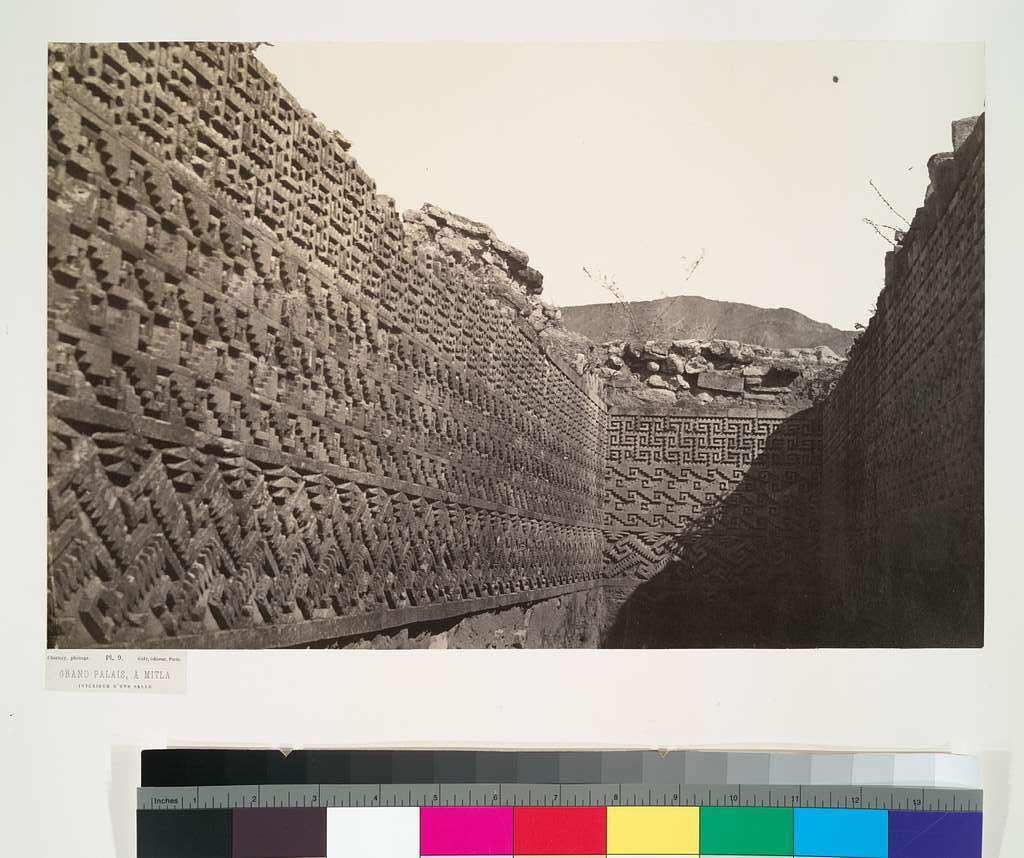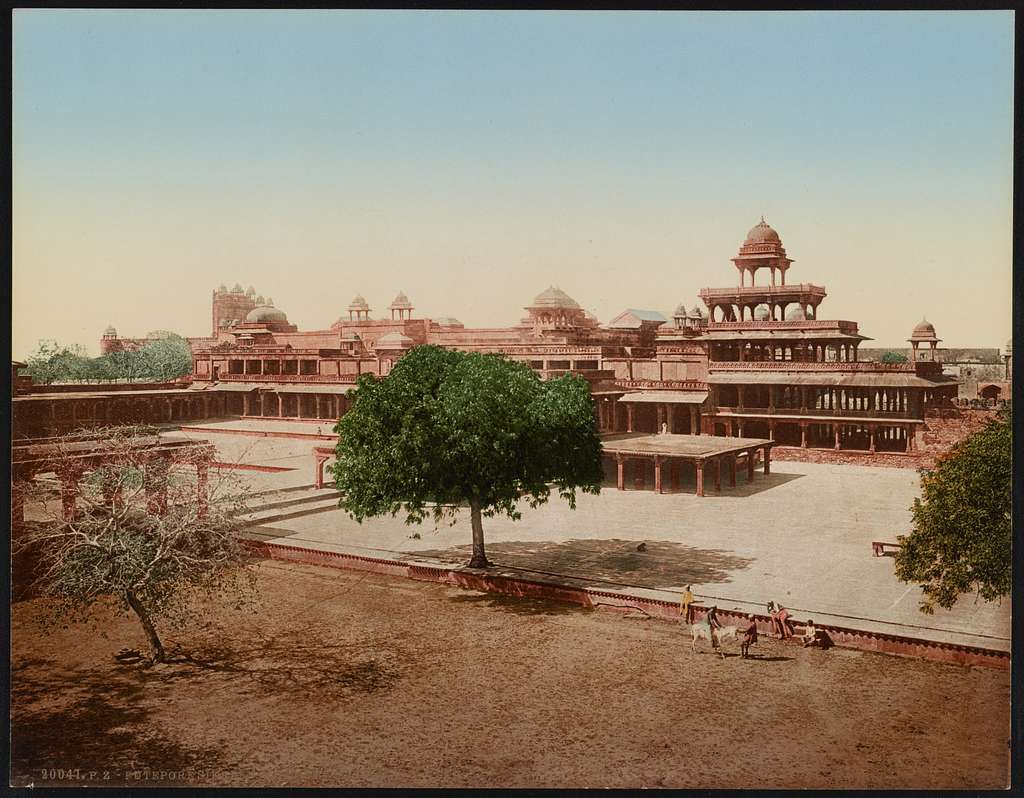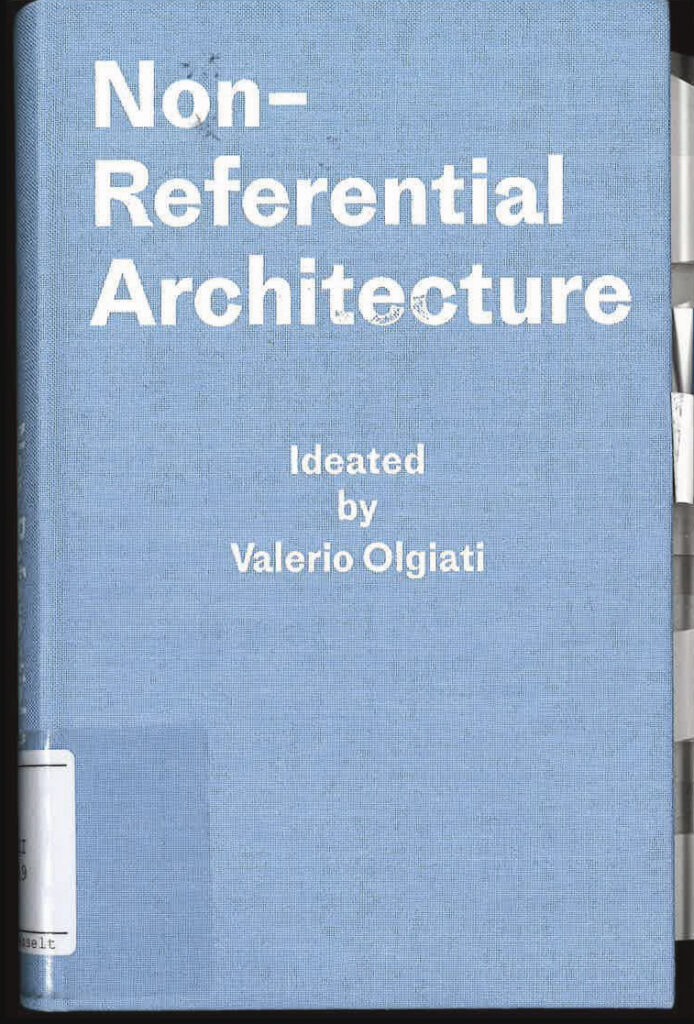
Image: Grand Palais, à Mitla, façade occidentale, 1862. Photographer: Désiré Charnay. Licence: CC0 1.0 Universal

Image: Futepore Sikreeh (Fatehpur Sikri), Panch Mahal, 1905. Licence: No known restrictions on publication.

I first came into contact with Valerio Olgiati’s work on one of our university excursions when we visited the school building in Paspels. In a rather simple geometric volume, the distribution of classrooms at each corner, rotating in position over the floors, develops a new spatial situation on each level. Although it is a school extension with the main building on the other side of the street, the house stands confidently in sharp angularity and yet in volumetrics and geometry fitting to the existing built fabric.
Another of Olgiati’s works, the Yellow House in Flims, reuses an existing building. The radical transformation does not build on the existing but uses the existing to create something entirely new, an almost sculptural object, rearranging the entrance situation, creating open spaces on every level that bear no resemblance to their original use as a shop and flats. The metaphor of the palimpsest introduced by Rodolfo Machado[1] for the reuse of buildings is literally put into practice here. For as Nigel Walter has pointed out, the new layers written over the earlier text have ‘no relation to the old, and if still legible the old is merely juxtaposed with the new’.[2]
The question of reference is also at the heart of Non-Referential Architecture, written by architectural theorist Markus Breitschmid but ideated by Olgiati. This manuscript concretises their theoretical understanding of architecture, which arises from the lack of universal meanings in our time. According to this,
“non-referential architecture is not architecture that exists as a referential vessel or symbol for something outside itself. Non-referential buildings are entities that are themselves meaningful and signifying, and as such they are no less the embodiment of society than buildings were in the past when they were vehicles of shared social ideals.”[3]
A framework of seven principles is used to reflect on architectural discourses and practices common today:
1. spatial experience;
2. unity;
3. novelty;
4. construction;
5. contradiction;
6. order;
7. sensemaking.
The aim is to create an architecture that does not need references to be meaningful, but develops its meaning from the creation of the space and the users’ experience of this space.
The idea of architecture that makes sense of itself is thought-provoking, especially since monuments and the reuse of existing buildings are often used as a means of forcing a relationship with the past or justifying design decisions with history. But how can we create non-referential architecture when we ourselves are referential because of our experiences and our own values? What does it say about us when we negate any reference? Doesn’t a lack of reference in the redesign and adaptation of buildings also imply a lack of meaning of the existing?
[1] Rodolfo Machado, “Old buildings as palimpsest. Towards a theory of remodeling.” Progressive architecture, 11 (1976): 46-49.
[2] Nigel Walter, Narrative Theory in Conservation. Change and Living Buildings (London: Routledge, 2020), 58.
[3] Markus Breitschmid and Valerio Oligiati, Valerio, Non-referential Architecture (Basel: Park Books, 2018), 13.